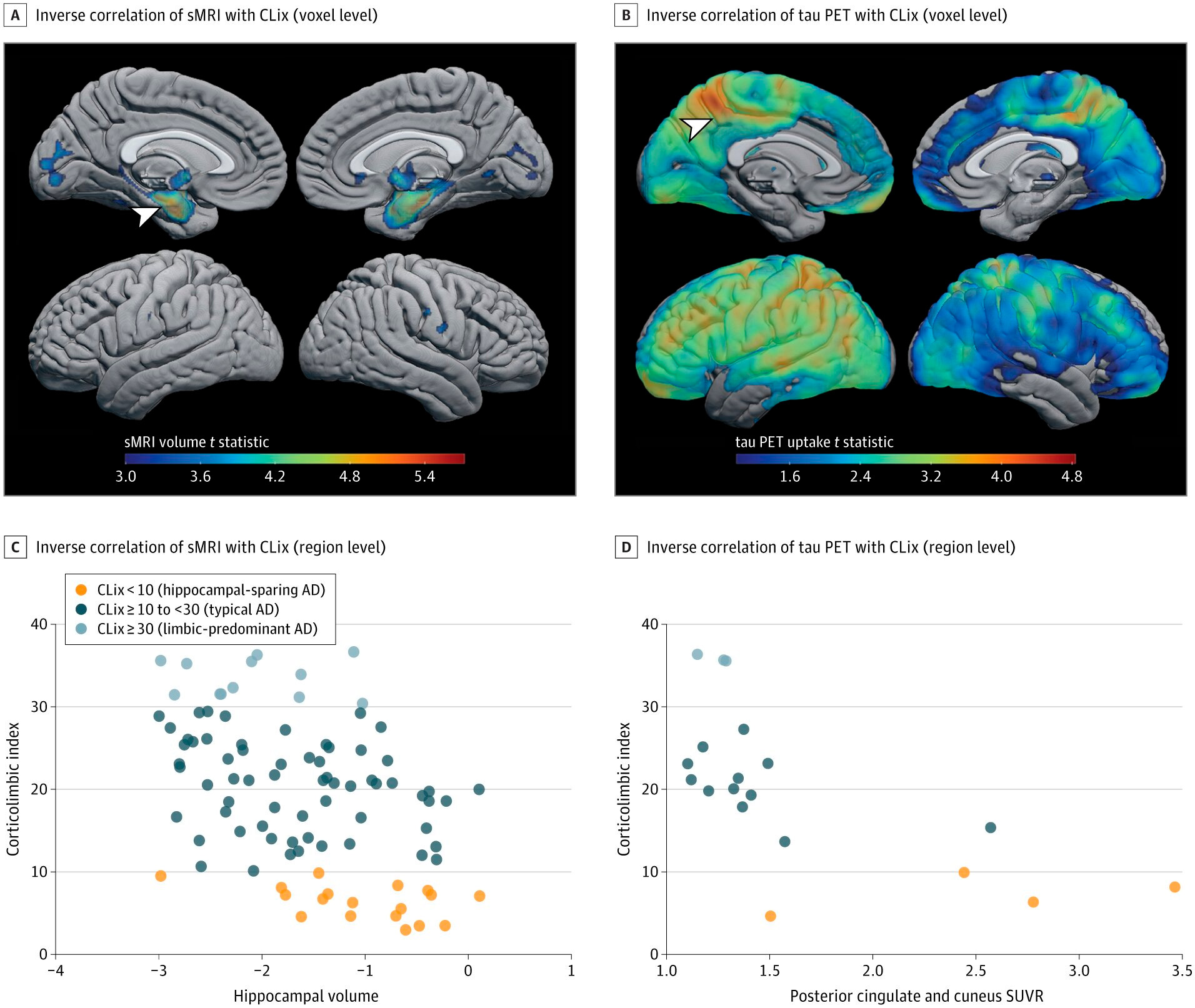Nye publikasjoner
Nytt verktøy kobler ulike typer Alzheimers sykdom til graden av kognitiv svikt
Sist anmeldt: 02.07.2025

Alt iLive-innhold blir gjennomgått med medisin eller faktisk kontrollert for å sikre så mye faktuell nøyaktighet som mulig.
Vi har strenge retningslinjer for innkjøp og kun kobling til anerkjente medieområder, akademiske forskningsinstitusjoner og, når det er mulig, medisinsk peer-evaluerte studier. Merk at tallene i parenteser ([1], [2], etc.) er klikkbare koblinger til disse studiene.
Hvis du føler at noe av innholdet vårt er unøyaktig, utdatert eller ellers tvilsomt, velg det og trykk Ctrl + Enter.

Forskere ved Mayo Clinic har oppdaget en rekke endringer i hjernen, karakterisert av unike kliniske trekk og immuncelleatferd, ved hjelp av et nytt verktøy kalt «kortikolimbisk indeks» for å diagnostisere Alzheimers sykdom, en ledende årsak til demens.
Funnene deres er publisert i tidsskriftet JAMA Neurology. Verktøyet klassifiserer Alzheimer-tilfeller i tre undertyper basert på plasseringen av endringer i hjernen og bygger på teamets tidligere arbeid ved å vise hvordan disse endringene påvirker mennesker forskjellig. Å avdekke den mikroskopiske patologien til sykdommen kan hjelpe forskere med å identifisere biomarkører som kan påvirke fremtidige behandlinger og pasientbehandling.
Et nytt verktøy kalt kortikolimbisk indeks tildeler en poengsum til plasseringen av giftige tau-proteiner som skader celler i områder av hjernen assosiert med Alzheimers sykdom. Studien fant at forskjeller i akkumuleringen av disse proteinene påvirker sykdomsprogresjonen.
«Teamet vårt fant slående demografiske og kliniske forskjeller i kjønn, alder ved symptomdebut og hastigheten på kognitiv nedgang», sier Melissa E. Murray, Ph.D., en translasjonsnevropatolog ved Mayo Clinic i Florida og seniorforfatter av studien.
Teamet analyserte hjernevevsprøver fra en multietnisk gruppe på nesten 1400 Alzheimer-pasienter donert mellom 1991 og 2020. Prøvene er en del av Florida Alzheimer's Initiative Multi-Ethnic Cohort, som holder til ved Mayo Clinic Brain Bank. Kohorten ble opprettet gjennom et samarbeid med Florida Alzheimer's Initiative.
Utvalget inkluderte asiater, svarte/afroamerikanere, latinamerikanere/latinoamerikanere, urfolk og hvite ikke-latinamerikanere som ble behandlet ved hukommelsesklinikker i Florida og donerte hjernen sin til forskning.
For å bekrefte verktøyets kliniske nytteverdi, studerte forskerne videre deltakere i Mayo Clinic-studien som hadde gjennomgått nevroavbildning i løpet av livet. I samarbeid med et team fra Mayo Clinic ledet av Prasanthi Vemuri, Ph.D., fant forskerne at kortikolimbiske indeksskårer var i samsvar med endringer i hippocampus oppdaget av MR og med endringer oppdaget av tau-protein positronemisjonstomografi (tau-PET) i hjernebarken.

Sammenheng mellom strukturell magnetisk resonansavbildning (sMRI) og PET-skanning av tau-proteiner og flokefordeling i den kortikolimbiske regionen. Kilde: JAMA Neurology (2024). DOI: 10.1001/jamaneurol.2024.0784
«Ved å kombinere vår ekspertise innen nevropatologi, biostatistikk, nevrovitenskap, nevroavbildning og nevrologi for å studere Alzheimers sykdom fra alle vinkler, har vi gjort betydelige fremskritt i forståelsen av hvordan den påvirker hjernen», sier dr. Murray.
«Corticolimbic Index er en vurdering som kan bidra til et paradigmeskifte i forståelsen av individualiteten til denne komplekse sykdommen og utvide vår forståelse. Denne studien representerer et betydelig skritt mot personlig tilpasset behandling, og gir håp om mer effektive fremtidige behandlinger.»
Det neste steget for forskerteamet er å oversette funnene til klinisk praksis, og gjøre Corticolimbic Index-verktøyet tilgjengelig for radiologer og annet medisinsk fagpersonell.
Dr. Murray sier at verktøyet kan hjelpe leger med å identifisere utviklingen av Alzheimers sykdom hos pasienter og forbedre klinisk behandling. Teamet planlegger også videre studier som bruker verktøyet for å identifisere områder i hjernen som er resistente mot det giftige proteinet tau.
